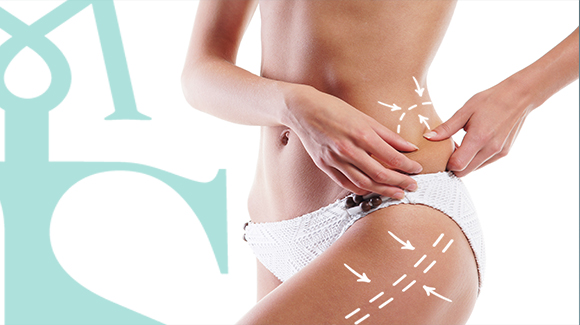
Swelling after liposuction is completely normal and expected. Your body needs time to heal, and swelling is part of how it repairs the tissues after fat removal. Most patients notice the most swelling during the first week, and it gradually improves over the next 4 to 12 weeks as your new contours become visible.
This guide explains what swelling looks like after liposuction, how long it typically lasts, what’s normal during recovery, and the most effective ways to reduce swelling safely at home. Knowing what to expect helps you stay calm and heal with confidence.
• Swelling begins immediately and is worst in the first 3–7 days
• Most improvement happens during weeks 2–6
• Final results become clearer as swelling fades over 3–6 months
• Compression garments, hydration, and movement help swelling go down faster
• Contact your surgeon if swelling is painful, worsening, or uneven after initial recovery
| Phase | What You See | How It Feels |
|---|---|---|
| Days 1–3 | Most swelling + some fluid leakage | Tender, pressure-like, bruised |
| Week 1–2 | Bruising fading, swelling begins softening | Still tight or uneven |
| Weeks 3–6 | Major swelling improvement, shape more visible | Slight swelling may return at the end of the day |
| 3–6 Months | Contours refine, skin tightens | Mostly comfortable, still settling |
| Up to 12 Months | Final shape fully defined | Rare small swelling flare-ups possible |
Swelling after liposuction is a completely normal part of healing. The procedure creates controlled trauma in the fat and surrounding tissues, which triggers the body to send fluid and white blood cells to the area to repair and protect it. This temporary fluid build-up is what causes the swollen, firm, or uneven feeling in the first few weeks.
Several factors can influence how much swelling someone experiences:
• Areas like legs and ankles swell more due to gravity
• Larger fat removal means more inflammation
• Technique affects recovery (ultrasound and laser methods may cause different responses)
• Age, genetics, and overall health impact healing speed
There are several simple steps that can help swelling improve faster and make recovery more comfortable:
• Wear your compression garment as instructed
Supports tissues, controls swelling, and shapes your results
• Stay hydrated
Helps your body flush excess fluid
• Limit salt intake
Reduces water retention
• Light walking daily
Improves circulation and prevents blood clots
• Elevation (if legs or ankles were treated)
Keeps fluid from pooling downward
• Avoid heat (hot tubs, saunas, sunbathing)
Heat increases inflammation early on
• No smoking or alcohol while healing
Both slow circulation and recovery
• Lymphatic drainage massage (only if your surgeon approves)
Supports drainage and reduces firmness
• Good nutrition
Protein, vitamins C & A help tissue repair
Small habits done consistently can make a big difference in how quickly swelling improves.
Some swelling is completely normal during recovery, but it is important to recognise when changes may indicate a complication. Paying attention to how the swelling looks and feels will help you know when it is time to contact your surgeon.
You should seek advice if you notice any of the following:
• Swelling that suddenly gets worse after it had started improving
• Redness, heat, or increasing pain in one particular area
• Foul-smelling fluid or pus leaking from the incision sites
• A firm, painful lump that seems filled with fluid (possible seroma or hematoma)
• Uneven swelling where one side looks dramatically different from the other
• High fever, chills, or feeling unwell, which may indicate infection
• Shortness of breath or sharp calf pain, which requires urgent medical attention
Most concerns can be treated easily if addressed early, so never hesitate to reach out to your surgical team. They want to be involved in your recovery and ensure your healing stays on track.
For more information please visit our Liposuction page on: https://www.berkeleysquaremedical.com/liposuction/
Most swelling is felt in the first 1–2 weeks. Significant improvement happens between weeks 3–6, with subtle refinement continuing for 3–6 months as your new shape settles.
Stay hydrated, walk daily, reduce salt intake, elevate treated areas when possible, avoid heat, do not smoke or drink alcohol while healing, and wear your compression garment exactly as instructed.
Yes. Swelling is the body’s natural response to healing and happens to every patient. It varies depending on the area treated and the amount of fat removed.
Uneven swelling is common during early recovery. Differences in tissue healing, fluid build-up, or the way you sleep can make one side appear larger temporarily.
Gravity slows fluid drainage in the legs, so swelling in the thighs, calves, and ankles may take longer to settle than in the stomach or arms.
Swelling naturally moves downward in the body. If the legs were treated, some fluid may temporarily pool in the feet.
Internal swelling in the abdomen takes time to soften because deeper tissues are healing. A firm or bloated feeling is normal in the first several weeks.
The arms have less skin laxity and many lymph nodes, so swelling may feel tight or stiff. Gentle movement helps improve circulation.
Compression, hydration, light walking, and lymphatic drainage massage (if approved by your surgeon) can help the body move fluid more efficiently.
Contact your surgeon if swelling worsens suddenly, looks very uneven, is hot or painful, or is accompanied by fever, foul-smelling drainage, or difficulty breathing.
Yes. Compression supports healing tissues, reduces swelling, and helps shape the treated area. It is one of the most important parts of recovery.
Yes. Mild swelling can return at the end of the day or after activity for several months, especially in the legs. This is normal and temporary.